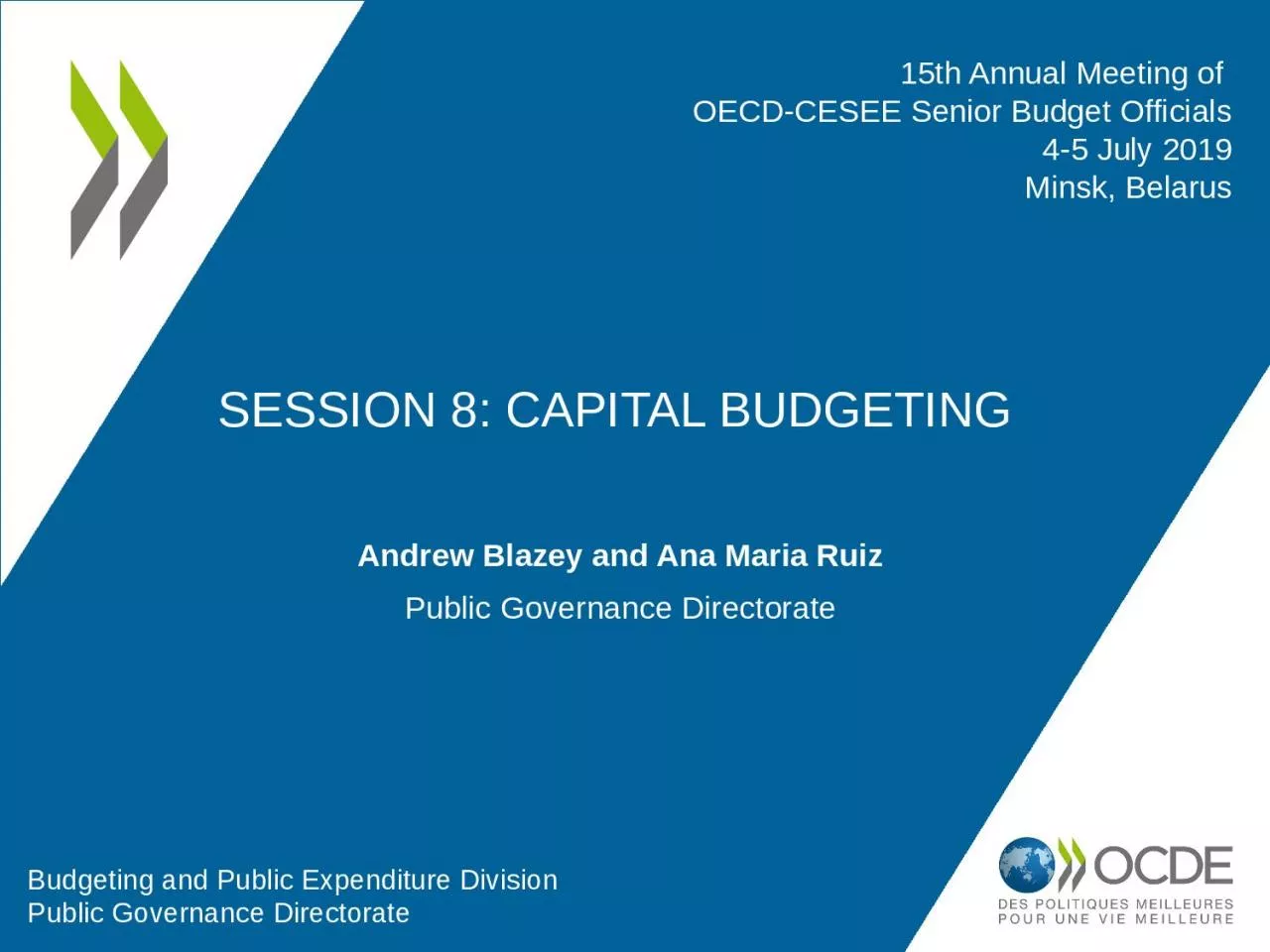

Andrew Blazey and Ana Maria Ruiz Public Governance Directorate 15th Annual Meeting of OECDCESEE Senior Budget Officials 45 July 2019 Minsk Belarus Budgeting and Public Expenditure Division ID: 1028824
Download Presentation The PPT/PDF document "Session 8: Capital Budgeting" is the property of its rightful owner. Permission is granted to download and print the materials on this web site for personal, non-commercial use only, and to display it on your personal computer provided you do not modify the materials and that you retain all copyright notices contained in the materials. By downloading content from our website, you accept the terms of this agreement.
1. Session 8: Capital BudgetingAndrew Blazey and Ana Maria RuizPublic Governance Directorate15th Annual Meeting of OECD-CESEE Senior Budget Officials4-5 July 2019Minsk, BelarusBudgeting and Public Expenditure DivisionPublic Governance Directorate
2. 212 years of expertise of the OECD Network of Senior PPP and Infrastructure Officials
3. The role of capital budgeting and infrastructureThe Ministry of Finance has a key role in dealing with:Capital budgeting: the planning and allocation of capital expenditure by governmentsInvestment management systems: the processes of prioritising, appraising, selecting, implementing and reviewing capital investment proposalsInfrastructure development: an asset class that refers to the reticulated supply of roads, energy, telecommunications, and water/waste-waterCommercial transactions, specifically public-private partnerships.Ministries of FinanceSpecialised agencies/unitsPrivate-sector involvement1234
4. Capital budgeting and infrastructureLong-term infrastructure planningAlignment to fiscal plansIntegration between capital and current expenditureManaging government and commercial expertiseWhat are we seeing in practice?
5. Improved strategic long-term planning of infrastructureSource: OECD (2018), Survey on Capital Budgeting and Infrastructure Governance
6. 62. Only 50% of countries have a long-term infrastructure aligned to a medium-term fiscal planSource: OECD (2018), Survey on Capital Budgeting and Infrastructure Governance
7. 3. Most OECD countries have some integration between current and capital budgets
8. 4. PPPs remain a small proportion of overall public sector infrastructure investment8Percentage of public sector infrastructure investment (value) through PPPs in the recent 3 yearsSource: OECD (2018), OECD Survey of Capital Budgeting and Infrastructure Governance, Question 58, OECD, Paris.
9. OECD Framework for the Governance of Infrastructure: Getting Infrastructure Right 9Ten dimensions or “success factors”Policy options to identify an enabling environmentBuilding on several OECD instruments (public procurement, integrity, budgeting)
10. Objectives Map OECD countries’ infrastructure governance practices, identifying strengths and weaknesses Provide tools for countries to assess performance in each of the infrastructure governance dimensionsContribute to the discussion on the relationship between infrastructure governance and outcomesProvide a comprehensive view of the components of the infrastructure governance frameworkDraw attention to each dimension, and the performance data available to measure infrastructure governance10The OECD Infrastructure Governance Indicators Project
11. The OECD Infrastructure Governance Indicators Project: a useful diagnosis tool for countriesAt first a country would have an outlook of its development status relative to the OECD averageNote: Hypothetical example
12. Multiple levels of analysis to inform decisionsZooming in into each pillar: Deeper understanding of a country’s strengths and weaknessesIdentify priorities to inform decision-making Note: Hypothetical example
13. Thank youAndrew BlazeyAndrew.BLAZEY@oecd.org Ana Maria Ruiz Rivadeneira AnaMaria.Ruiz@oecd.org Budgeting and Public ExpenditurePublic Governance Directorate, OECD